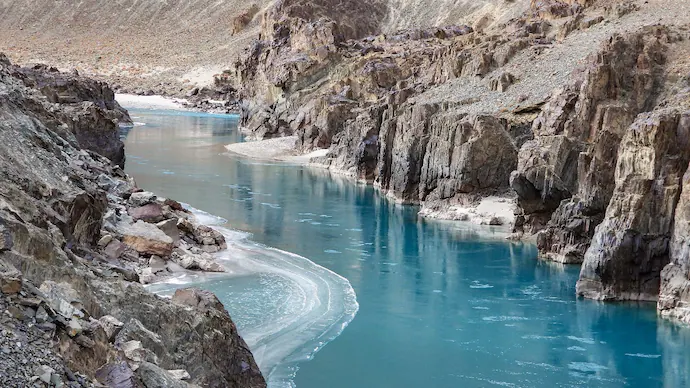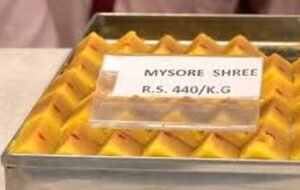
Abrogate the Indus Waters Treaty: India’s Right to Water and Justice
Why India Must Reconsider the 1960 Treaty with Pakistan
CLAT Current Affairs 2026 | International Treaties | India-Pakistan Relations
best online coaching for CLAT, online coaching for CLAT, CLAT current affairs 2026, Indus Waters Treaty, India-Pakistan relations, treaty abrogation
Why in News?
Amidst heightened diplomatic tension and constant Pakistani opposition to India’s water projects in Jammu & Kashmir, discussions around abrogating the Indus Waters Treaty (IWT) have resurfaced. The article by former diplomat Dilip Sinha in The Indian Express argues that the treaty has been fundamentally unfair to India and has failed to promote cooperation.
Signed in 1960 and brokered by the World Bank, the IWT is often hailed globally as a rare example of water-sharing between hostile neighbours. However, the editorial contends that it has been more of a strategic burden than a diplomatic success for India.
Point-wise Summary for CLAT Aspirants
- What is the Indus Waters Treaty (IWT)?
- Signed in 1960 between India and Pakistan with the World Bank as a guarantor.
- Divides six rivers of the Indus Basin:
- Western Rivers: Indus, Jhelum, Chenab — given to Pakistan.
- Eastern Rivers: Ravi, Beas, Sutlej — given to India.
- Pakistan gets rights over ~80% of water despite being downstream.
- India’s Limited Rights Under the Treaty:
- India can use eastern rivers freely for any purpose.
- Limited rights on western rivers for non-consumptive uses like irrigation, storage (limited), hydropower (run-of-river projects only).
- Why Is the Treaty Considered Unfair?
- Treaty was signed when India had limited bargaining power.
- Gave rivers originating in India to Pakistan.
- Pakistan continues to object to every Indian water project, especially in J&K.
- India bound by restrictions not reciprocated by Pakistan.
- Pakistan’s Exploitation of the Treaty:
- Raised repeated objections on Indian hydel projects (e.g., Kishanganga, Salal, Tulbul).
- Prevented India from using even permitted rights through legal and diplomatic obstruction.
- Refused to cooperate in Permanent Indus Commission mechanisms.
- Geopolitical Context and Double Standards:
- Pakistan allies with China (Tibet) and Afghanistan on water matters but expects India to comply.
- Countries like Turkey, China, Ethiopia, Laos, Thailand do not offer downstream nations similar water access.
- India is unusually generous compared to global norms.
- IWT vs International Water Law:
- When IWT was signed, customary international law had not matured.
- Today, the UN Watercourses Convention (1997) emphasizes equitable and reasonable use.
- India is disadvantaged by IWT’s rigid allocation system.
- World Bank’s Role:
- Provided financial aid for dam construction: $531 million to Pakistan, $61 million to India.
- Supported Pakistan’s projects far more than India’s.
- Encouraged Pakistan’s diplomatic leverage without ensuring compliance.
- Examples of Pakistan’s Obstructionism:
- Opposed Salal, Tulbul, Kishanganga, and Ratle projects.
- Demanded design changes, suspension, or international arbitration.
- Consistently delayed and frustrated Indian energy development.
- Codification of River Sharing Law:
- The IWT predates modern international legal standards.
- UN and International Law Commission later emphasized “shared natural resources,” which is not reflected in the IWT.
- Author’s Argument: Abrogate or Renegotiate:
- India must not continue with a lopsided treaty.
- The treaty no longer reflects realities of geopolitics, hydrology, or diplomacy.
- Unilateral abrogation is legally risky but renegotiation under new legal norms is justified.
Concept Notes and Glossary (For CLAT Students)
Term | Explanation |
Indus Waters Treaty (IWT) | A 1960 water-sharing agreement between India and Pakistan, mediated by the World Bank. |
Run-of-River Project | A hydroelectric system that uses river flow without a dam or large reservoir. |
Permanent Indus Commission | A bilateral body created under IWT for dispute resolution and data sharing. |
Customary International Law | Legal norms developed through consistent practice and accepted as law. |
Watercourses Convention (1997) | UN treaty on transboundary water use; focuses on equitable and reasonable use. |
Riparian Rights | Legal rights of those who live along the course of a river. |
Upstream/Downstream Countries | Countries located higher/lower along a river system; often central to water disputes. |
CLAT Relevance: How This Topic Connects
This topic is highly significant across CLAT sections:
Legal Reasoning
- Treaty law, international law principles, and India’s sovereign rights.
- Potential questions on unilateral abrogation, customary law, and treaty renegotiation.
Current Affairs
- Directly connects with India-Pakistan relations, water disputes, and climate geopolitics.
- Potential developments in international arbitration or treaty law can be testable.
Reading Comprehension
- Passage-based questions on international treaties, resource sharing, and conflict resolution.
Conclusion
The Indus Waters Treaty, once hailed as a model of cooperation, now appears outdated and restrictive. It binds India disproportionately while empowering Pakistan to misuse its provisions for political and diplomatic obstruction. With emerging legal norms and hydro-political realities, India must revisit, renegotiate, or even abrogate the treaty to secure its water rights, energy needs, and sovereignty.
For CLAT 2026 aspirants, this issue is not just about water—it’s about understanding how international agreements, national interests, and legal doctrines intersect in real-world geopolitics. Mastering such complex current affairs gives aspirants an edge in the Legal Reasoning and General Knowledge sections.







